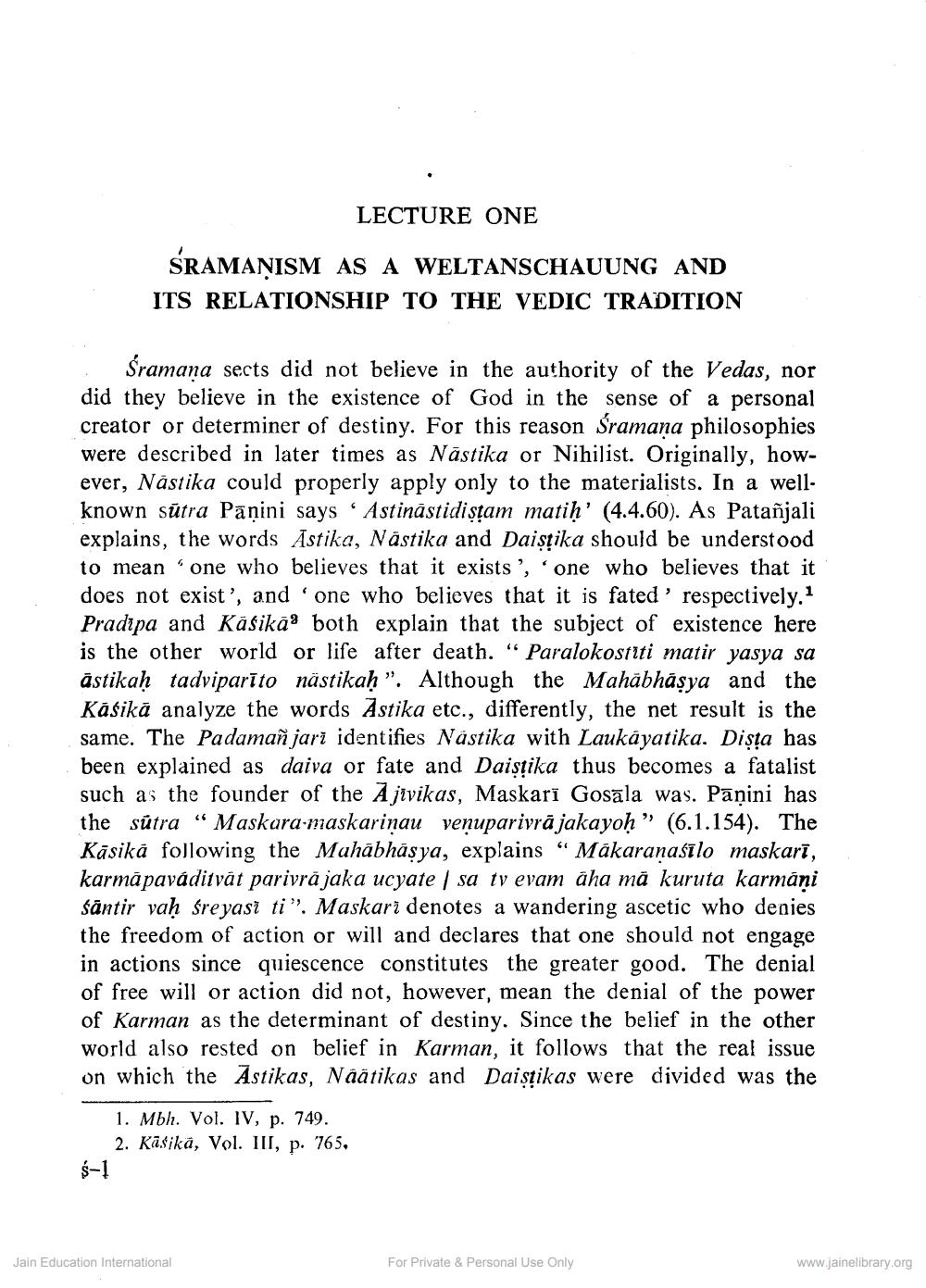________________
LECTURE ONE
SRAMANISM AS A WELTANSCHAUUNG AND ITS RELATIONSHIP TO THE VEDIC TRADITION
Śramana sects did not believe in the authority of the Vedas, nor did they believe in the existence of God in the sense of a personal creator or determiner of destiny. For this reason Šramana philosophies were described in later times as Nāstika or Nihilist. Originally, however, Nästika could properly apply only to the materialists. In a wellknown sūtra Panini says 'Astināstidistam matiņ' (4.4.60). As Patañjali explains, the words Astika, Nästika and Daistika should be understood to mean one who believes that it exists', 'one who believes that it does not exist', and one who believes that it is fated respectively. 1 Pradipa and Kāśikāå both explain that the subject of existence here is the other world or life after death. “ Paralokostiti matir yasya sa astikaḥ tadviparīto nästikaḥ”. Although the Mahābhāsya and the Kasiká analyze the words Astika etc., differently, the net result is the same. The Padaman jari identifies Nästika with Laukayatika. Dista has been explained as daiva or fate and Daistika thus becomes a fatalist such as the founder of the Ajivikas, Maskarī Gosāla was. Panini has the sútra "Maskara-niaskarinau venuparivrā jakayoh (6.1.154). Kāsiká following the Mahābhāsya, explains “Makaranaśīlo maskarī, karmā pavaditvåt parivrä jaka ucyate sa tv evam áha mã kuruta karmáni śāntir vaḥ śreyasi ti". Maskari denotes a wandering ascetic who denies the freedom of action or will and declares that one should not engage in actions since quiescence constitutes the greater good. The denial of free will or action did not, however, mean the denial of the power of Karman as the determinant of destiny. Since the belief in the other world also rested on belief in Karman, it follows that the real issue on which the Astikas, Näätikas and Daistikas were divided was the
1. Mbh. Vol. IV, p. 749. 2. Kāśikā, Vol. III, p. 765,
Jain Education International
For Private & Personal Use Only
www.jainelibrary.org




